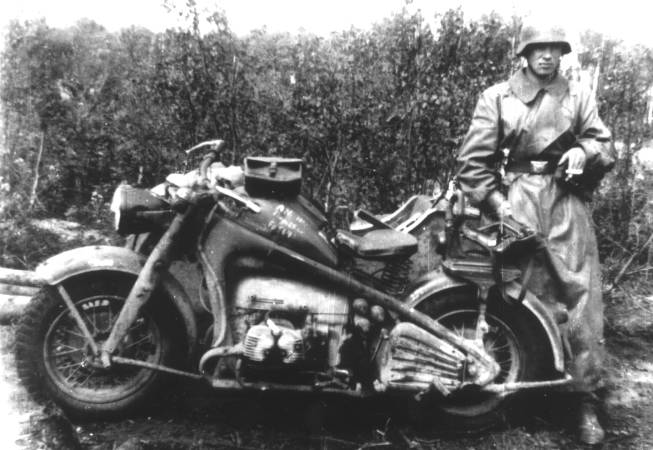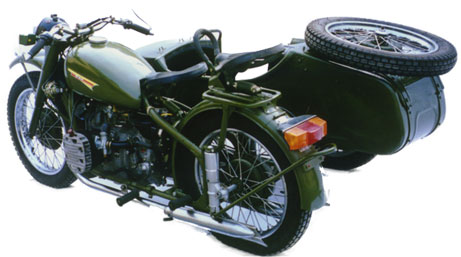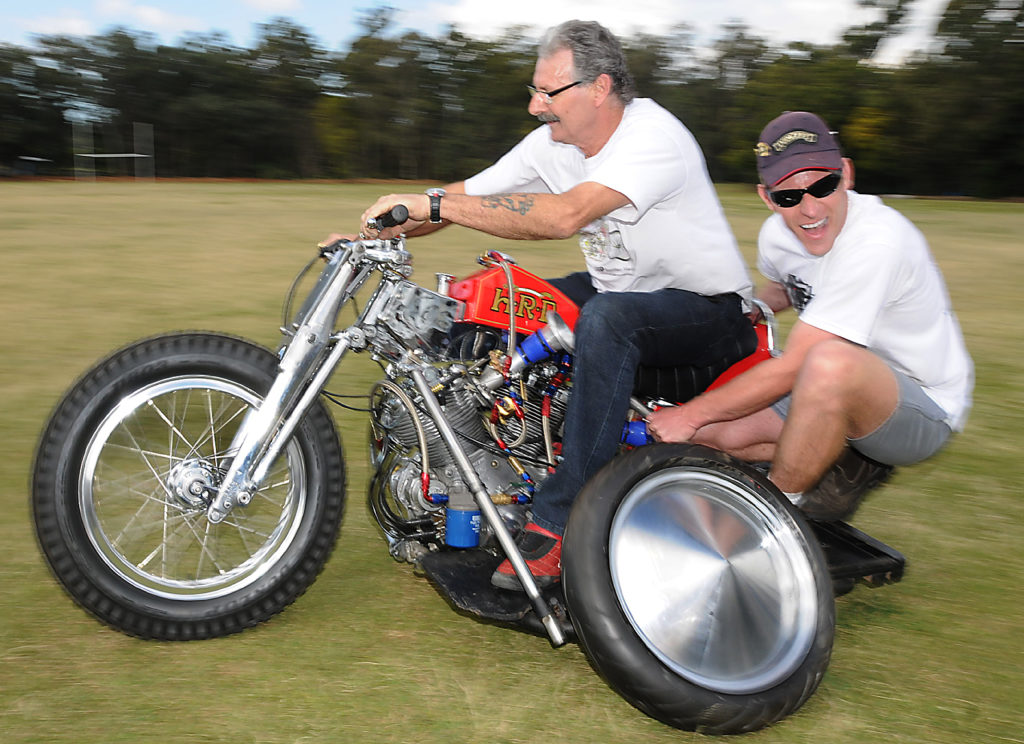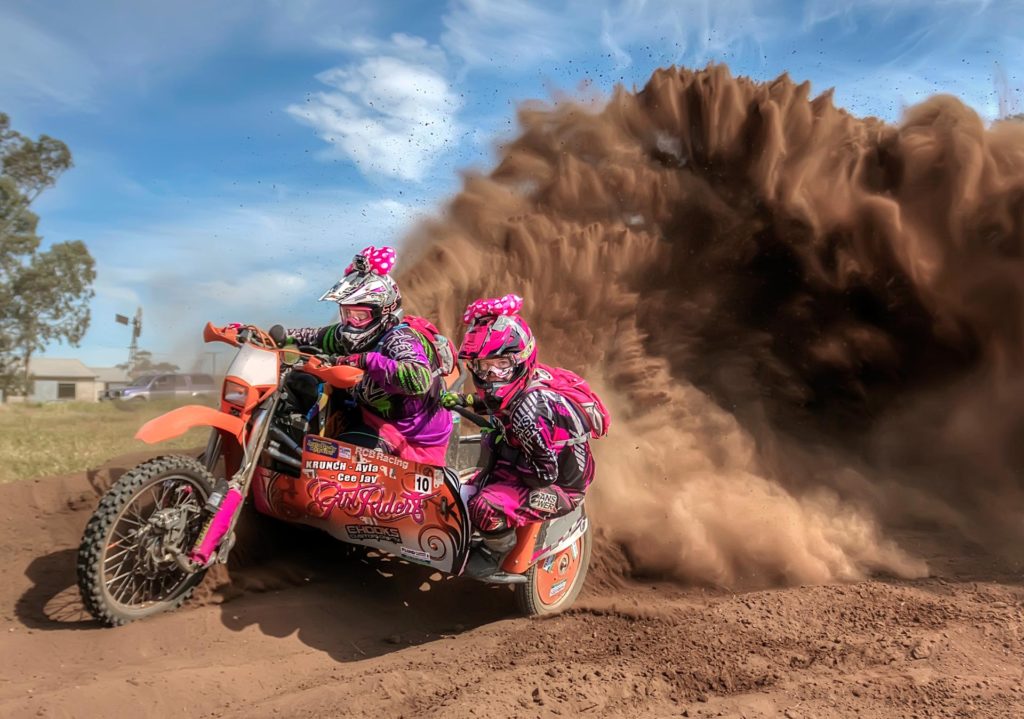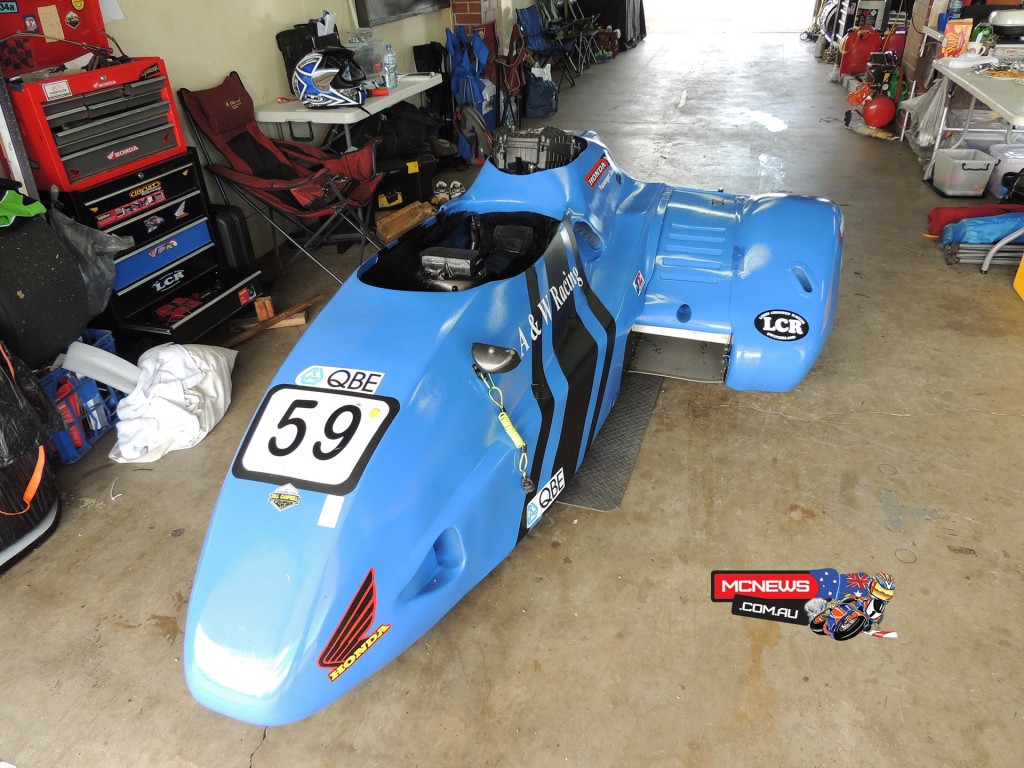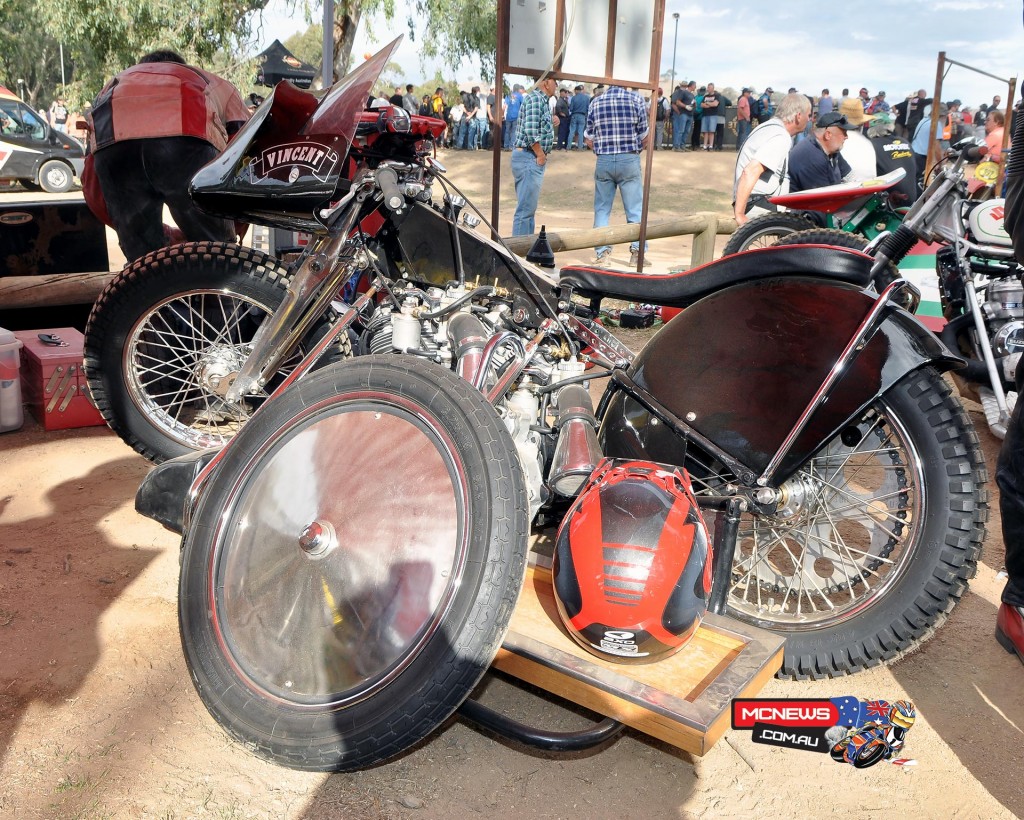The third wheel
Phil Hall talks sidecars
I never really have got my head around sidecars. Despite the fact that my very first motorcycle ride was in one of them, I just haven’t figured them out. A quick bit of history to set the scene. Sidecars came along pretty much as soon as motorcycles did. If you wanted to carry more than one other friend around you had to have something other than a pillion seat. But sidecars really hit their straps from about the 1930’s onwards. Seen as the poor man’s car, a motorcycle/sidecar combination was the cheapest way of getting your family around if you couldn’t afford a car. And in Britain, where sidecars thrived and multiplied, there was an additional advantage to owing one. They were cheaper to buy, obviously, but they were also cheaper to register. Higher rates of registration applied if your vehicle had four wheels, so the sidecar was seen as a cheap way around family transportation.
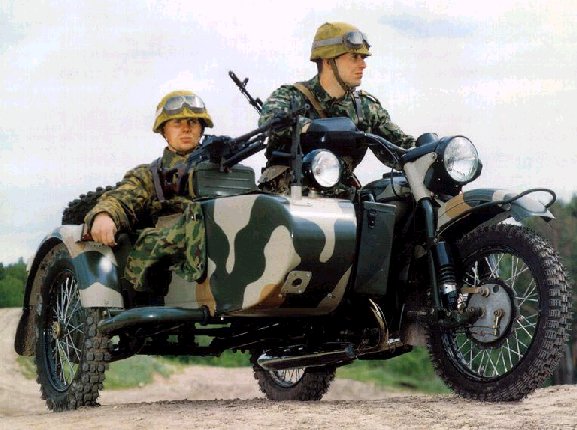
Throughout the great depression, WWII (when many items of private transport were simply mothballed due to unavailability of petrol) and on into the austere days of post-war Britain, the sidecar was ubiquitous (I have now achieved my goal of finding somewhere where I could legitimately use this word today), sidecars were everywhere. It is difficult for us to understand today how deeply the after effects of WWII affected life in Europe and Britain. Rationing of essential goods and many luxury goods was still continuing well into the late 1950’s 15 years after the war had concluded and those effects continued well into the 60’s. And so it was common to see families travelling in sidecars.
Incidentally, as is usual with these situations, it took some time for legislators to realise that legislation needed updating and so we see the absurdities of cars like the Reliant Robin, made well into the 60’s and patently a car, yet able to be registered at the same rate as a motorcycle/sidecar combination for no other reason than the fact that it had three wheels. The proliferation of mini cars with three wheels during this era was totally in response to the fact that a three wheeled vehicle was cheaper to register than a four-wheeled one.
Since this is a motorcycling article I won’t go into why the Reliant people didn’t turn the design around and have the two wheels at the front and the one wheel at the back, a plainly more stable arrangement. But I suppose that, if they had done that we would have not had the wonderful “Top Gear” spoof on it that we all enjoy so much.
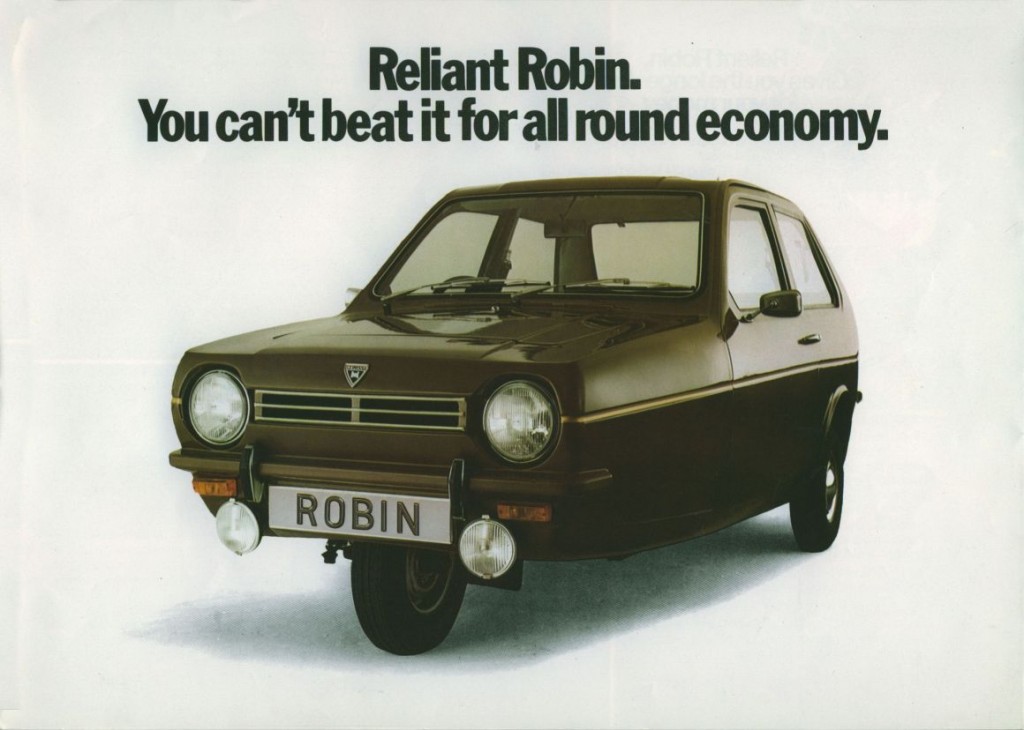
As mentioned above, my first ever motorcycle ride was in 1956 in Adelaide when a family friend who, with his girlfriend, was looking after us while dad and mum transacted some business in town, took my brother and I for a ride around the suburb in his sidecar. The sidecar was attached to a Jawa 350cc two stroke motorcycle that was so slow that it could barely move itself let alone the appendage on the side, but Ron, to his credit, took his new bride to Port Lincoln, a monumental distance from his home in Adelaide for their honeymoon! And he took Paul and I for a ride this fateful day. No helmets, no protective gear of any kind and two of us crammed into the sidecar. My memories of the ride itself are hazy. Far more clear is the reaction of my mother when she got home and found out what Ron had done!
But I’m afraid, historical reasons notwithstanding, I just don’t get sidecars. To me they have none of the advantages of a motorcycle and all of the disadvantages of a car. I don’t get how unstable they are and I don’t get how waving the sidecar in the air whilst negotiating left-hand corners is a wise idea. I appreciate the engineering of a beautiful Steib or a Dusting or a Vincent bike/sidecar combination but I’m afraid it’s not for me.
But three wheels opens up a few other avenues as well that I might take a minute or two to explore. For example.
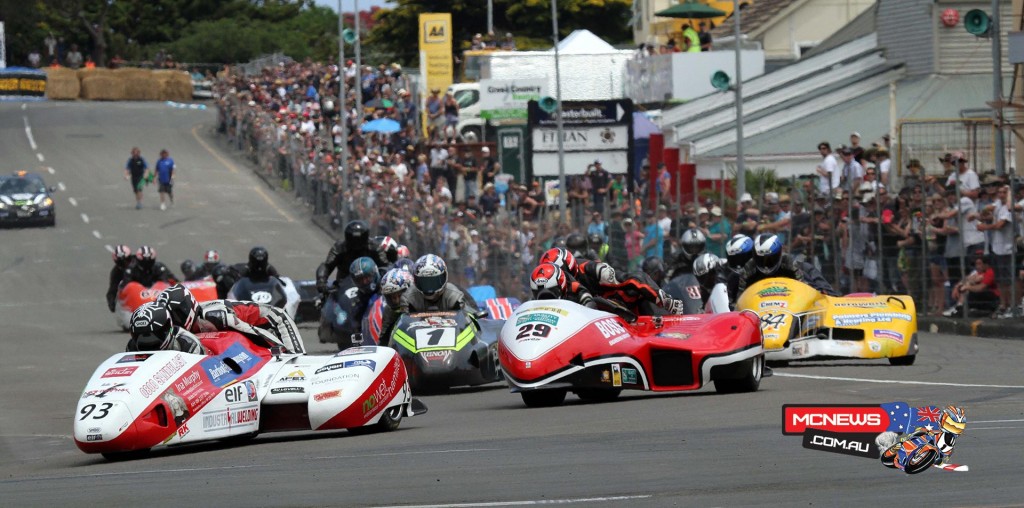
Racing sidecars. To begin with, sidecar racing was simply that, take your motorcycle/sidecar combination to the track and race it, and it stayed pretty much that until after WWII. But by the 1950’s specialised sidecar outfits had become popular and much, much faster. The better ones started to lap the Isle of Man circuit in times that, not too many years earlier, had been respectable times for a solo. Specialised outfits ridden by men like Stand Dibden and Florian Camathias started the plunge towards the fully streamlined racing outfits we see today. Boutique frame manufacturers like Windle and Renwick made an outfit that you could buy, put your own engine in and go racing. Then, in the late 70’s – early 1980’s the French and the Swiss (yes, the Swiss) bombed sidecar racing with a series of outfits that revolutionised sidecar racing. Rolf Biland with his Beo pushed the envelope so far that his outfits were banned as organisers had to concede that they were really just three-wheeled cars with all the attendant formula racing technology that that entailed.
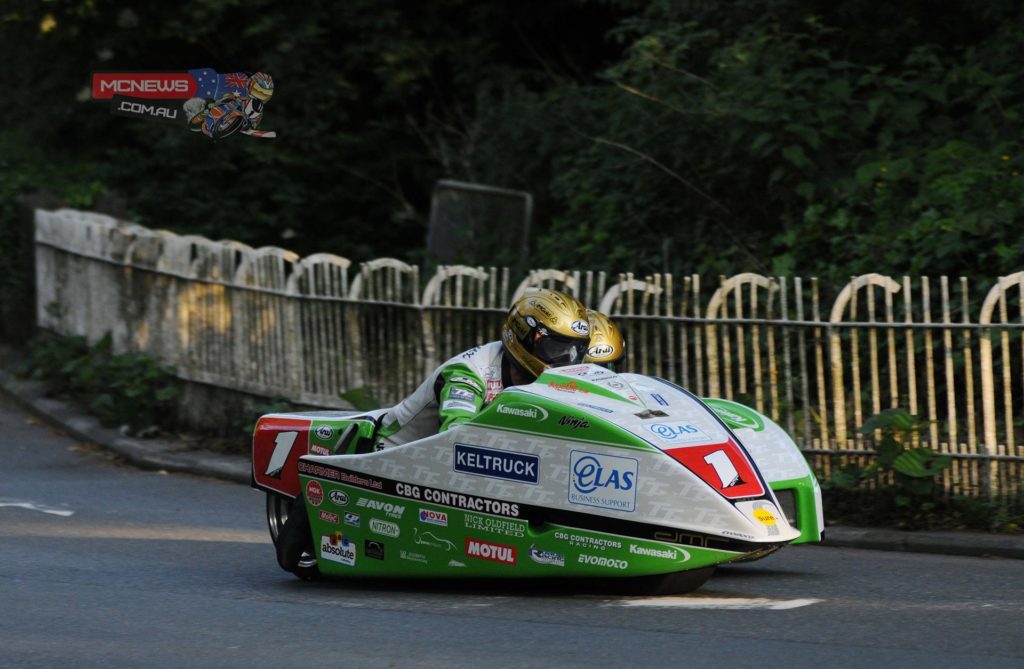
Since then sidecar racing technology has stagnated somewhat with regulations forbidding the radical excesses of that era (both wheels driven, rear wheel steering etc) but the march of progress with the modern-day “worm” outfits has seen some extraordinary machines face the starter. However, it is fair to say that, while they race at motorcycle meetings, the fact is that they are far more closely related to formula racing cars than they are to motorcycles.
But I’m not quite finished with three wheels just yet. Witness the CanAm Spyder.
Stranded in the no man’s land between car and motorcycle, the Spyder has become an extremely popular machine in the last few years. In varying iterations between the “sport” model and the full-dress touring model, the Spyder has appealed especially to older riders who want to travel and be able to carry a reasonable amount of luggage, who are perhaps returning to motorcycling and want something a little more stable or who have a partner with whom they would like to travel but the partner is too frightened to pillion.
I seriously considered one myself when I got the bug to ride again after the accident; I even took a test ride on one. But I found the lack of any sort of power steering placed too much strain on my damaged shoulder. It must be STEERED rather than leant into a corner like a bike and 15 minutes of open road and round town riding was murdering my shoulder. It was a shame because they accelerate like a bank robber leaving the scene, stop on a dime and the traction control means that insane cornering speeds are possible. I also confess to being somewhat put off (though I shouldn’t have been) by several of my riding friends making remarks about it not being a motorcycle and that they wouldn’t ride with me if I bought one.
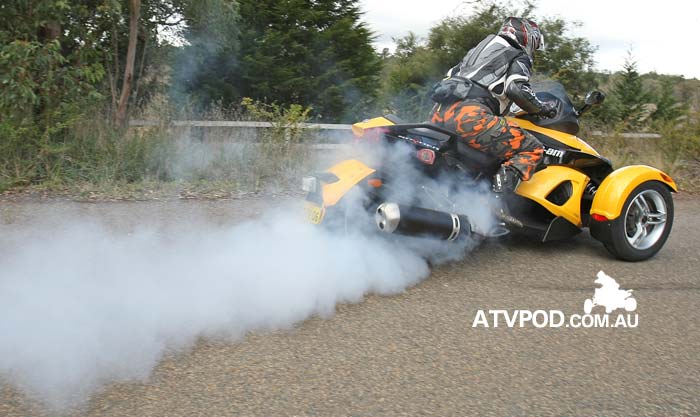
In the same sense as the CanAm being suitable for riders who would struggle, perhaps, with a “normal” motorcycle, trikes are another three-wheel niche. For some it is just a case of wanting to be different, for others the reasons are medical/disability-related but there is a flourishing trike scene as well.
Now there are probably several three wheel devices that I have omitted so I make my apology now. But there is one sort that I have omitted deliberately and that is those ghastly VW-engined things. Definitely not a motorcycle, I cannot see the attraction in any way at all and I refuse to discuss them.
And sidecars have not just proved to be popular on the tar. Australia invented and popularised sidecar racing on the dirt with the 1960-70’s being the halcyon years of speedway sidecars. Brutal outfits powered by big Japanese engines running on methanol thrilled the crowds at speedways all over the country (as well as featuring in some of the most fearsome accidents seen on the track). For a while there, there was a considerable cross-over with speedway sidecar fiends also running a road racing outfit as well, but the advent of the “worms” and the decline of speedways in the 80’s has seen speedway sidecar racing decline correspondingly.
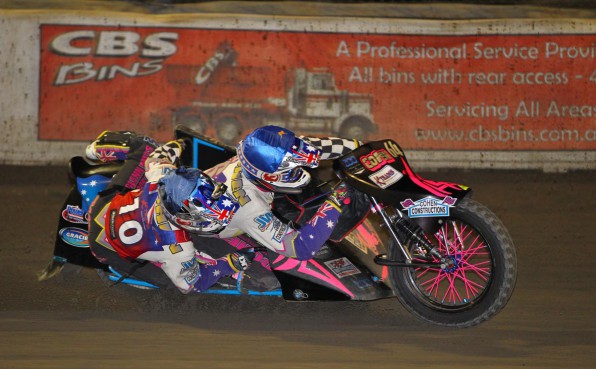
Then there is sidecar MotoCross, a frantic and incomprehensible pursuit, sidecar short circuit (speedway outfits that are occasionally required to turn in both directions) and even observed trials sidecars.
In fact, it is fair to say that every motorcycle pursuit that has been attempted by a solo motorcycle has also been attempted by a sidecar outfit. Don’t they run sidecars in the Dakar? I think they might.
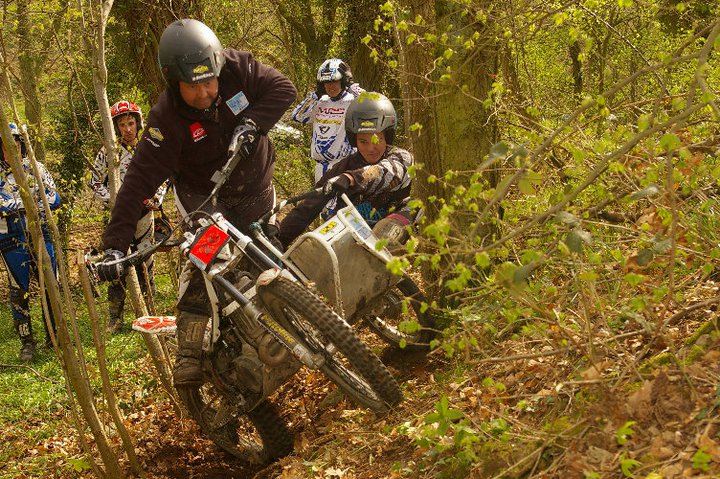
And it is most appropriate that we look at this subject right now with the Isle of Man TT races about to begin. Sidecars will be a big part of the programme with the three wheel machines having been a fixture on the island since ever racing started there. As scary as solo racing is on the island, sidecar racing would appear to be doubly so. And maybe someone can enlighten me as to why the Europeans have the sidecar platform on the opposite side to us?
Later I’d like to look at some personal reminiscences about road racing sidecars but, at the risk of finishing on a negative note, I still don’t get sidecars. Maybe I have been missing something all these years?

